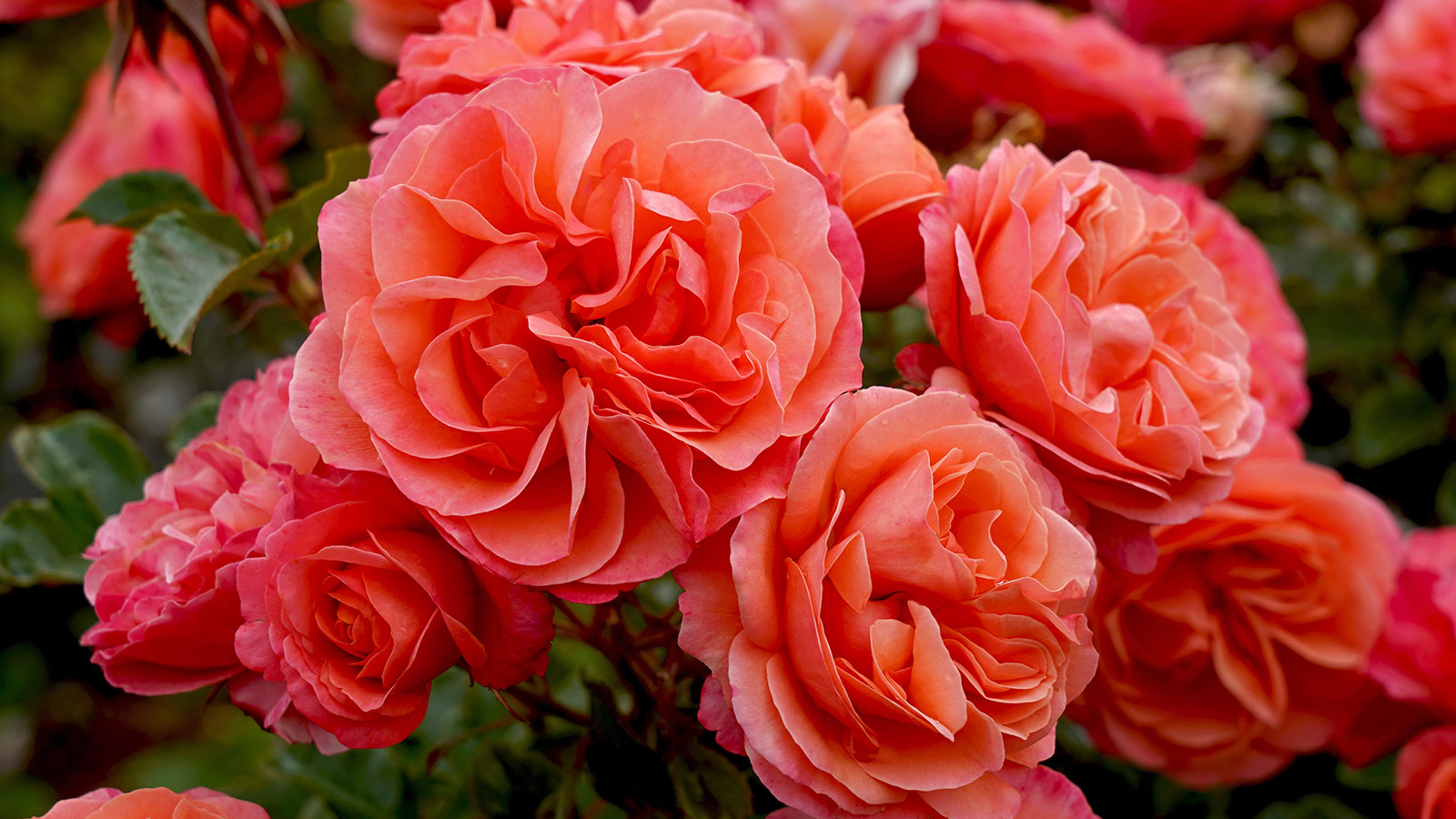
Rose black spot is one of the most common and serious diseases to affect roses, some of the most beautiful and alluring plants in the garden. It can appear all year round, remaining for as long as the plant is in leaf and once it takes hold it can seriously weaken your rose.
If you're thinking of planting roses this year, however, there's no need to despair because it rarely kills plants and it is treatable. In fact there are many methods of knocking it back and preventing its spread, including chemical sprays, practical measures and organic solutions
There is even a bizarre-sounding ‘anecdotal’ measure involving corn meal that I tried in spring last year, because I have several roses in the garden and they inevitably fall foul of black spot to some degree. While the corn meal didn’t completely prevent black spot, it did delay it on the rose I was experimenting with until well into the summer, so I plan to try it again this year with more rigorous application.
What does rose black spot look like?
Rose black spot is easy to identify. It usually starts as dark or purple blotches on the upper surface of a leaf. These may turn yellow at the edges, and the leaf will eventually fall, although sometimes the spots stay small and the foliage stays on the plants. Young stems may also be affected with scabby, dark blisters.
If a rose is very badly infected the disease can check its growth and reduce its vigor.
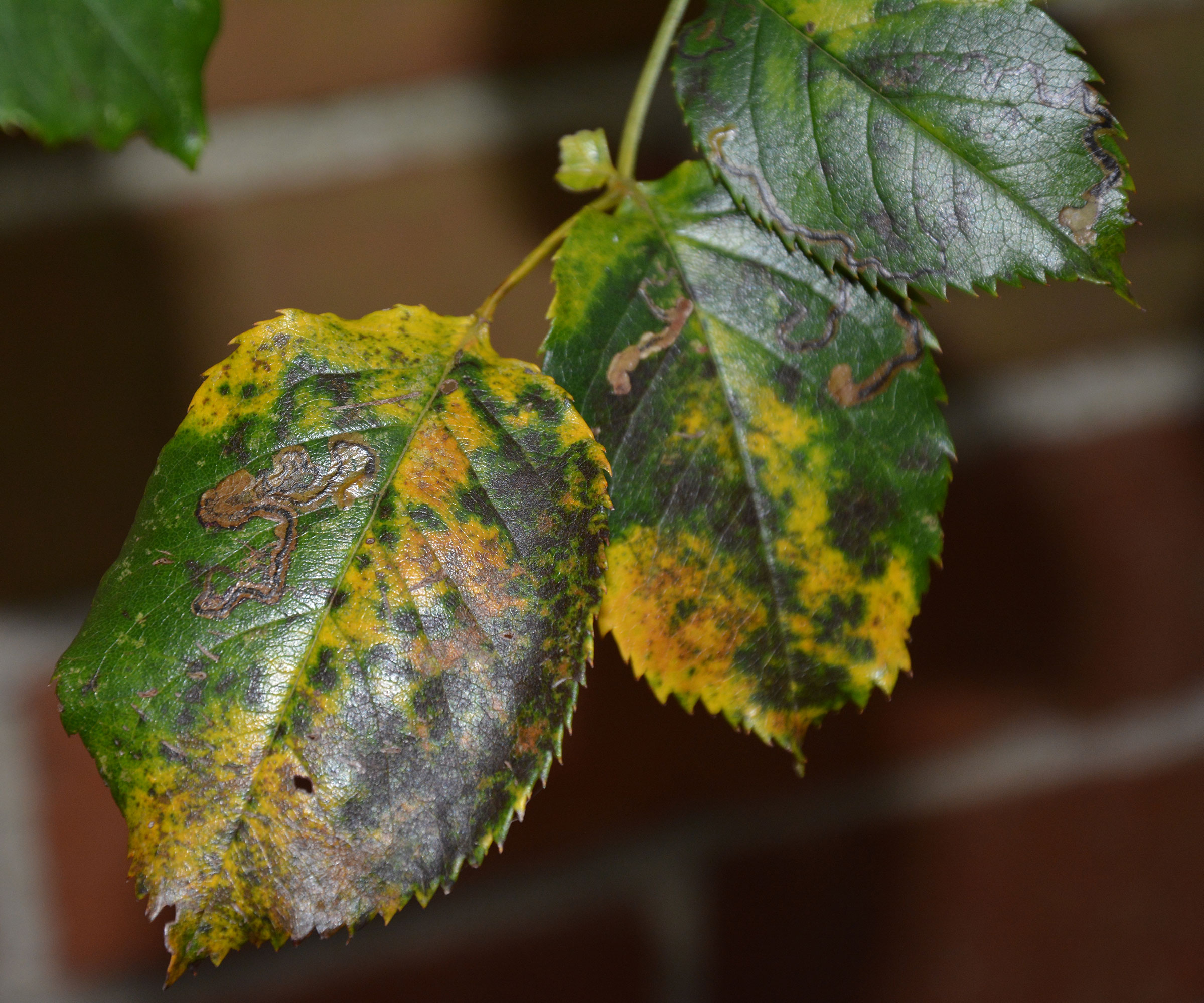
What causes rose black spot?
The culprit is a fungal disease called Diplocarpon rosae. Unfortunately it is genetically diverse so new strains are continually appearing.
This means that although rose breeders are always coming up with new varieties that are resistant to the disease, their protection fails to last as new strains of the pathogen evolve.
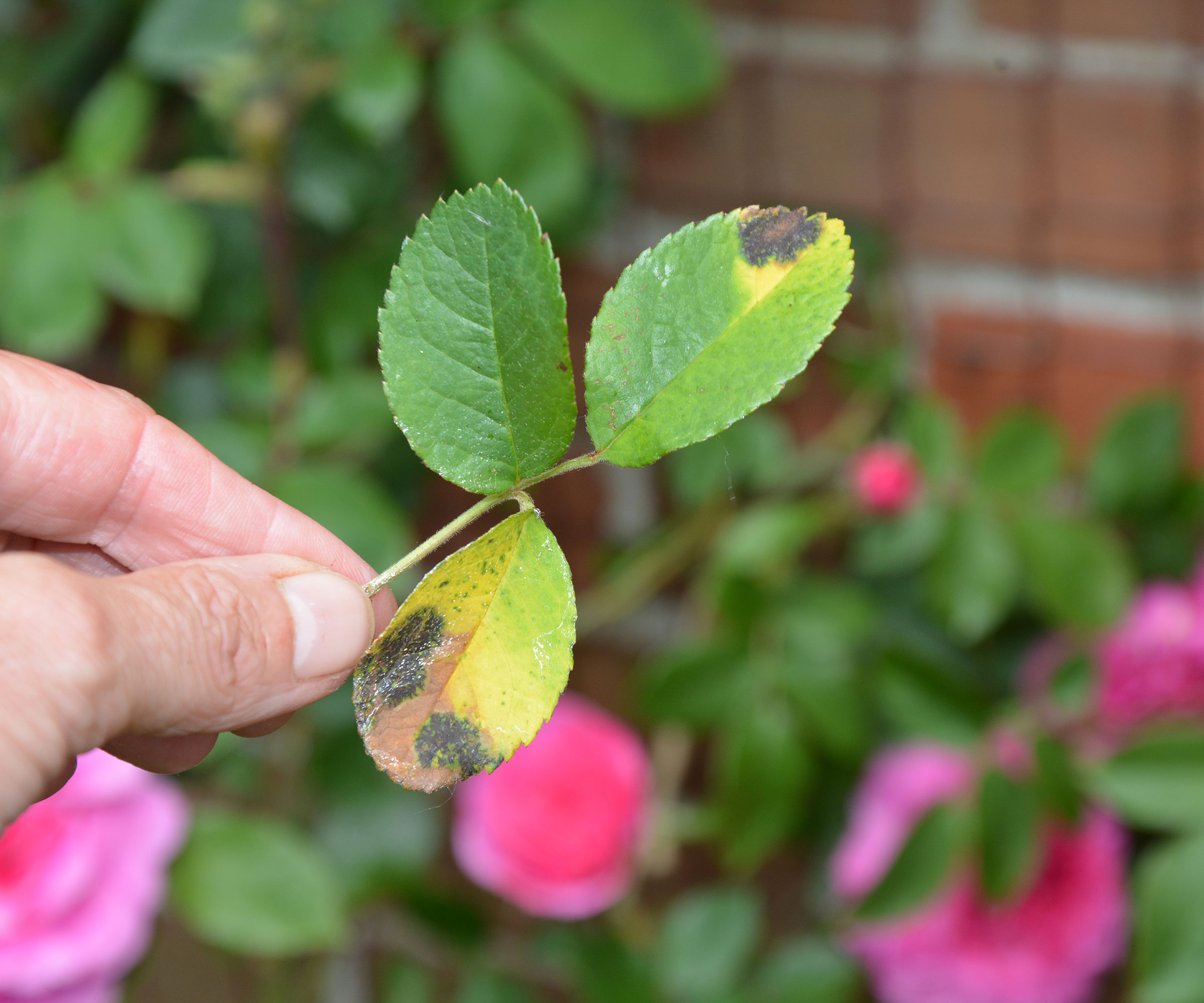
Preventing rose black spot
Once a rose has black spot it is hard to get rid of the problem because the spores from fallen leaves linger in the soil and reinfect the plant by being splashed up by rain. However, you can give your rose the best chance of staying healthy by giving it the right care and attention.
Fungal diseases such as black spot and powdery mildew thrive in areas where plants are crammed in together and there is poor airflow, leading to still, warm, damp conditions. Prevent this by making sure plants in your rose garden have room to grow properly, so air can move between them.
As well as knowing when to fertilize roses, make sure you give them the right amount of rose fertilizer, like this Great Big Roses soil and fertilizer booster from Amazon, and water them correctly. Plants that grow healthily are less likely to succumb to pests and disease, and if they do develop problems they are better equipped to recover afterwards.
Mulching generously in spring and fall is also important. It can be wood chip mulch, like this Mighty 109 cedar wood chip mulch from Amazon, well-rotted homemade compost or farmyard manure from your local farm, stables, garden store or online. Something like this Black Kow composted cow manure fertilizer from Amazon would be suitable.
The right types of mulch will feed the soil and roots, but also bury any black spot spores so they are less likely to be splashed back up in rain to re-infect a treated plant.
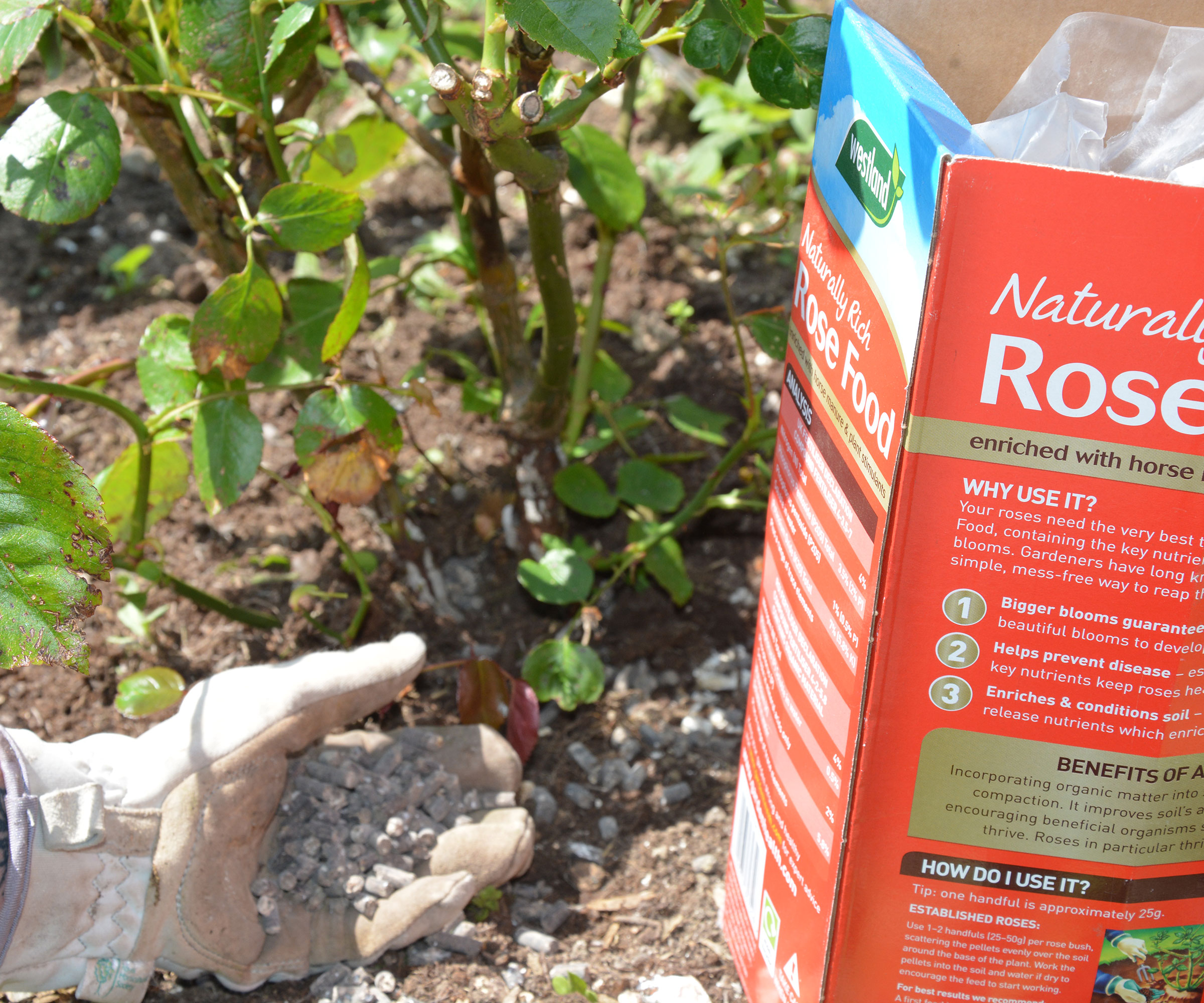
How to treat rose black spot
If a rose has had black spot one year it increases the chance of it returning the next. To try and prevent it, mulch around your plant in spring and start spraying with a plant fungicide as soon as the new leaves start to emerge. You may need to do this throughout the growing season to keep your plant healthy.
There are many fungicides available. Some are concentrate and need letting down, such as BioAdvanced Disease Control for roses, plants and shrubs on Amazon. Others come as ready-to-use sprays and will tackle pests at the same time, including this BioAdvanced 3-In-1 Insect, Disease and Mite Control one, also on Amazon.
If black spot does appear despite treatments, cut off the affected leaves with sharp garden snips or remove them by hand to make way for healthy new growth.
Also examine the soil around the plant and collect up any fallen leaves showing signs of black spot. Never compost diseased leaves as the spores will thrive in your compost heap and be spread around the yard.
Instead, put diseased plant material in the trash or burn it, then clean your pruning shears to prevent the disease being transmitted to other roses when you deadhead or prune them.
In the fall, collect up all fallen rose leaves and mulch around the plant to bury the spores. When pruning roses that have been infected by black spot, add the cut stems to the trash or burn them, never add them to the compost heap.
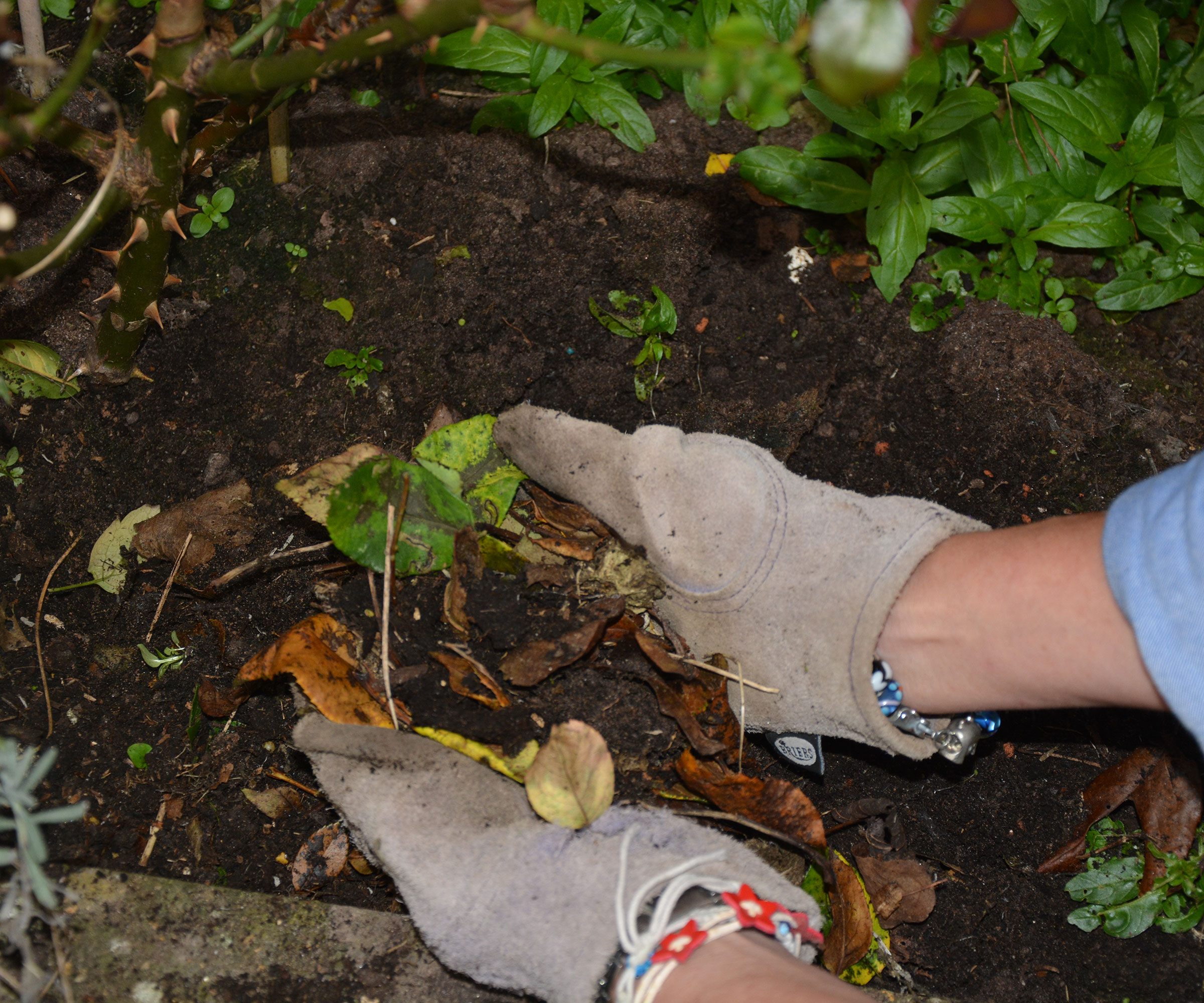
Natural treatments for rose black spot
If you prefer not to use chemicals you need to be extremely diligent with your plant care, mulching, removing diseased leaves and feeding and watering to keep your plants as healthy as possible.
Organic sprays against rose black spot are available and include Bonide Rose Rx Multi-Purpose Fungicide, Insecticide and Miticide on Amazon, which comes as concentrate as well as a ready-to-use spray and is made with a natural disinfectant called Neem. Neem is also widely used in homemade bug sprays for keeping pests away from plants.
You could also try Earth's Ally Disease Control Concentrate (also on Amazon) which also works against powdery mildew and tomato blight.
Sulfur can also be used in organic gardens to combat fungal diseases, and copper fungicide sprays like this Bonide Captain Jack's Copper Fungicide at Walmart are also effective.
Some household products can also be used against rose black spot. Baking soda, which has been used for generations as a household cleaner, changes the pH level of the leaves making it harder for the fungal spores to adhere. Make a solution of a teaspoon of baking soda mixed with a quart of water and spray it thickly onto the roses every week and after rain.
There is also anecdotal evidence that cornmeal can help delay rose black spot. It contains a fungus called Trichoderma that is harmless to humans but kills black spot pathogens. Apply it around your rose in spring and fork it into the soil.
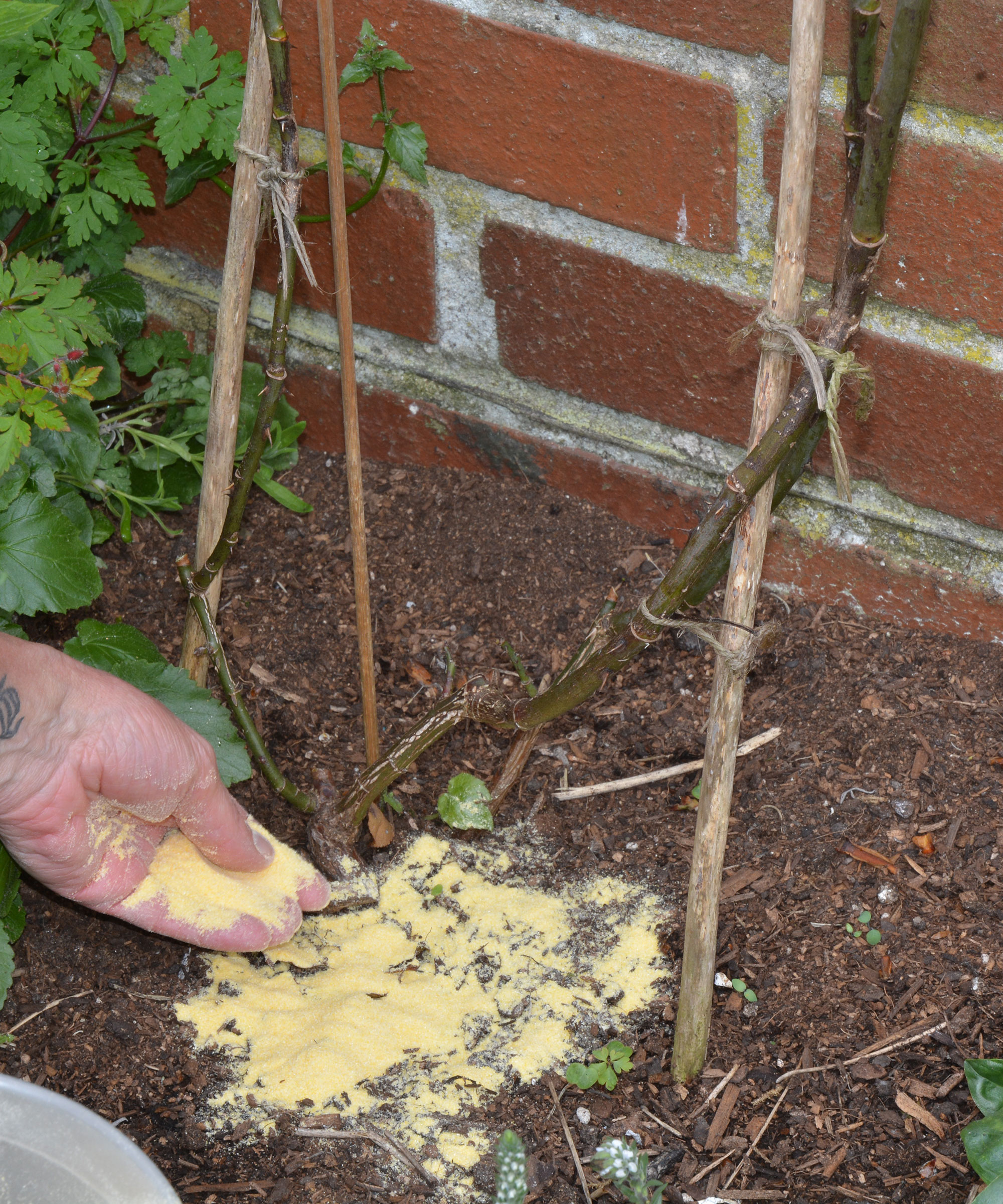
Rose varieties resistant to black spot
Although there are some varieties of roses that are resistant to black spot, the fungus mutates and produces new strains so swiftly that complete protection may only last a few seasons.
However, resistant roses may still recover faster and better from attacks of the disease, so consider these options if you are designing a rose garden:
- Hybrid tea roses: ‘Elizabeth Taylor’ and ‘Great Scott' (pink), ‘Love and Peace’ (yellow with pink/apricot tints) and ‘Sheer Bliss’ (while with pale fishes).
- Floribunda roses: ‘Angel Face’ (lavender), available at Nature Hills, ‘First Kiss’ (pale pink), and ‘Simplicity’ (pink).
- Shrub roses: ‘Distant Drums’ (pinky-orange), ‘Winter Sunset’ (apricot), ‘Prairie Harvest’ (yellow).
- Climbing roses: ‘Dublin Bay’ (red), available at Nature Hills, ‘Rambling Red’ (red), also at Nature Hills, and ‘Eden’ (pale pink).
- Miniature roses: ‘Apricot Twist’ (pale apricot), ‘Rose Gilardi’ (deep pink with paler stripes).
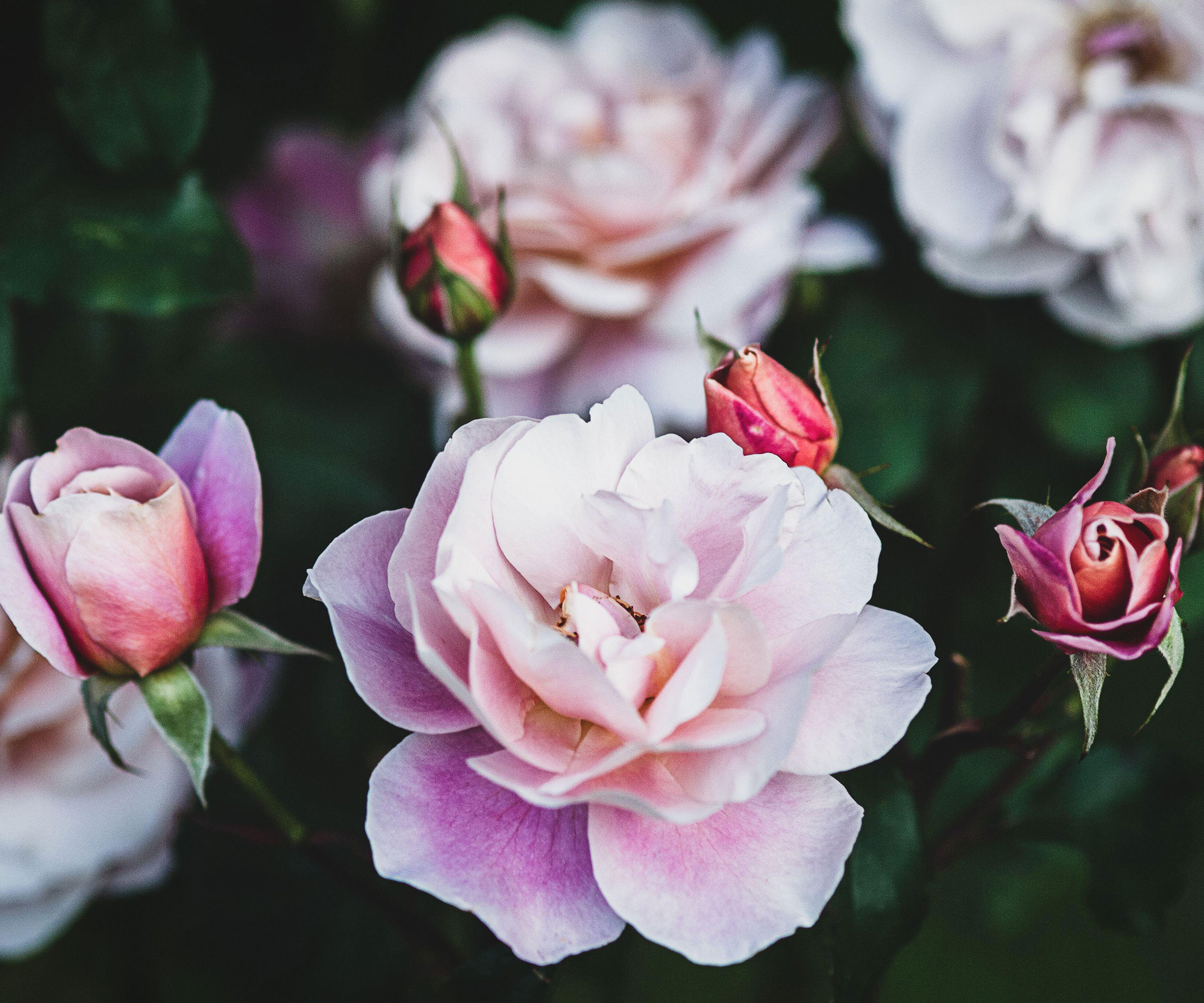
FAQs
How does rose black spot spread?
Rose black spot is a fungal disease. It is spread by spores that travel in water, whether it is from the gardener watering their plants, humidity and rainfall.
If the spores fall onto the soil they will stay there and be splashed back onto the plant when it is watered or when it rains. Mulching in spring and fall traps the spores in the soil so they can't reinfect the plant.
Can rose black spot affect other plants?
Although many varieties of plants get a variation of black spot disease, it is not the same pathogen as rose black spot.
All black spot diseases are fungal, and can be treated with good garden hygiene and plant care, and by using a general fungicide such as this Garden Safe fungicide from Amazon.
Although it can be disappointing to discover that your favorite rose is suffering from rose black spot, it doesn't have to mean that your plant will die from this common disease.
By following the best treatment methods you can nurse it back to health, plus take precautions to prevent it spreading to other roses in your flower beds.







